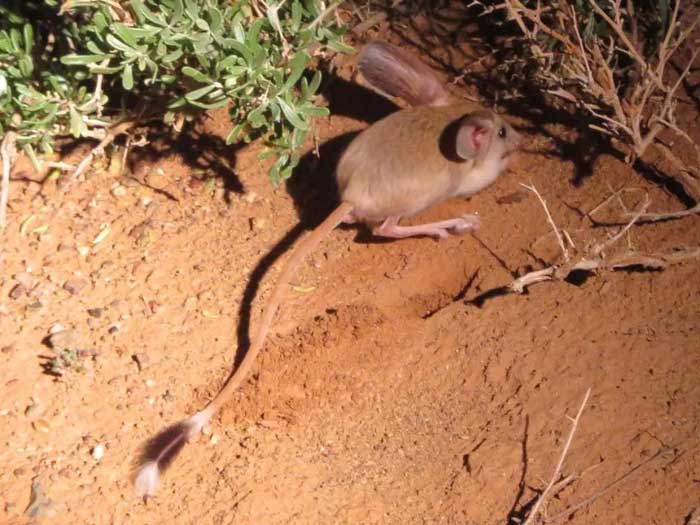In fact, there are many species of mammals with tails and body proportions longer than that of red pandas, such as squirrels, red kangaroos, and vervet monkeys.
Mammal body length refers to the length from the tip of the snout to the anus or base of the tail, and the length of the tail refers to the length from the anus or base of the tail to the end of the tail (not including the length of the tail feathers). tail).
Specifically for the red panda, the body length of an adult individual ranges from 50 cm to 64 cm and the tail length ranges from 28 cm to 59 cm. With a longer body length, the tail is also longer. So far, no tail longer than the body length has been found in the same red panda. The red panda is a mammal native to the eastern Himalayas and southwestern China. They have red-brown, black fur with a long, shaggy tail. They are roughly the size of a domestic cat, but have a longer and heavier body. Red pandas are herbivores, but also eat eggs, birds, and insects. The red panda is not in the same family as the giant panda, but in the family Ailuridae, closely related to ferrets and skunks.
The red panda is a mammal native to the eastern Himalayas and southwestern China. They have red-brown, black fur with a long, shaggy tail. They are roughly the size of a domestic cat, but have a longer and heavier body. Red pandas are herbivores, but also eat eggs, birds, and insects. The red panda is not in the same family as the giant panda, but in the family Ailuridae, closely related to ferrets and skunks.
Of course, this tail is also very eye-catching, we can understand the long tail as an adaptation of the red panda to its arboreal habitat - which can make it maintain its balance in a complex environment. But such evolutionary pressures are not unique to red pandas. A large number of arboreal and mountain mammals have similar evolutionary strategies. Some animals have evolved long tails due to pressure to choose a mode of movement.
For example, animals that often move by jumping will need a long tail to stabilize their center of gravity, and some animals need a thick and long tail to easily turn their heads, etc.

The snow leopard is a large cat that lives in the high mountains of Asia. They have a thick white or light gray coat with black or brown spots. They can be from 75 to 150 cm long and weigh from 25 to 75 kg. They are carnivores that hunt wild goats and sheep. They have small and rounded ears to minimize heat loss, wide legs to navigate the snow, and long tails for balance. The snow leopard is currently threatened by illegal hunting, habitat loss and conflict with humans.
Therefore, in the whole group of mammals, the long tail is not exclusive to the red panda, and its tail length ratio is also not "best", most squirrels have a tail length ratio similar to the red panda. The ratio of body length: tail length of snow leopards is very close to 1:1, there are also some individuals whose tail length is slightly longer than body length, so the red panda is definitely not a species with longest tail on our planet.

Ateles fusciceps spider monkeys have very long arms and tails, which help them climb trees efficiently. Their tails are also capable of grasping objects such as fruits or leaves. Spider monkeys Ateles fusciceps are mainly fruit eaters, but may also eat leaves, seeds, insects or honey when food is lacking.
This brown-headed spider monkey (Ateles fusciceps) living in northwestern Central and South America has an extremely long tail, no need to measure closely, its tail length is much longer than the length of its body.
In fact, measurements can find individuals with body length:tail length about 1:1.9. This long tail is also highly adaptable to the tree environment, basically the long tail is equivalent to its "fifth limb", which can more flexibly grasp the branches.

The long-eared gerbil is a small rodent that lives in the area from Alxa to Altai Gobi in Outer Mongolia. Due to the harsh environment, available food sources are limited. Having to forage in a large area makes it develop the body structure to move quickly, they often swing their tails during running to control the direction of action and maintain balance.
The long-eared gerbil (Euchoreutes naso) is a species of mammal in the family Dipodidae, the order Rodent. This species was described by Sclater in 1890. The long-eared gerbil is characterized by very large ears compared to the size of the head, the ear length is about 1/3 of the head length.
This rat lives mainly in the Gobi desert of northern China and the southernmost part of Mongolia. This rat is mainly active at night and eats insects as its main food. This rat can jump very far and quickly thanks to its long hind legs and tail for balance. Some records suggest that it would use its tail to hit the ground hard to increase the force of the bounce.
However, at the present time, it is unfortunate that the research on this species and the brown-headed spider monkey is still incomplete and there is no further study on these species.
The new long-eared gerbil was discovered in 1879 and is difficult to access, while the brown-headed spider monkey population is also in danger, and wild individuals live in the canopy for a long time and are difficult to find. approach.
- The poor dog is paralyzed and can’t stand up crying for everyone’s help and doesn’t leave him in this helpless moment
- The moment when the brave loyal dog fought to the last moment sacrificing himself to protect the safety of his owner from the attack of venomous snakes made us extremely emotional and couldn’t hold back his tears me
- The touching story of bubbles and her puppies will probably bring tears to your eyes
- Top 12 Animals With The Longest Tongue On Earth
- Top 15 animals with the most unique eyes in the world






